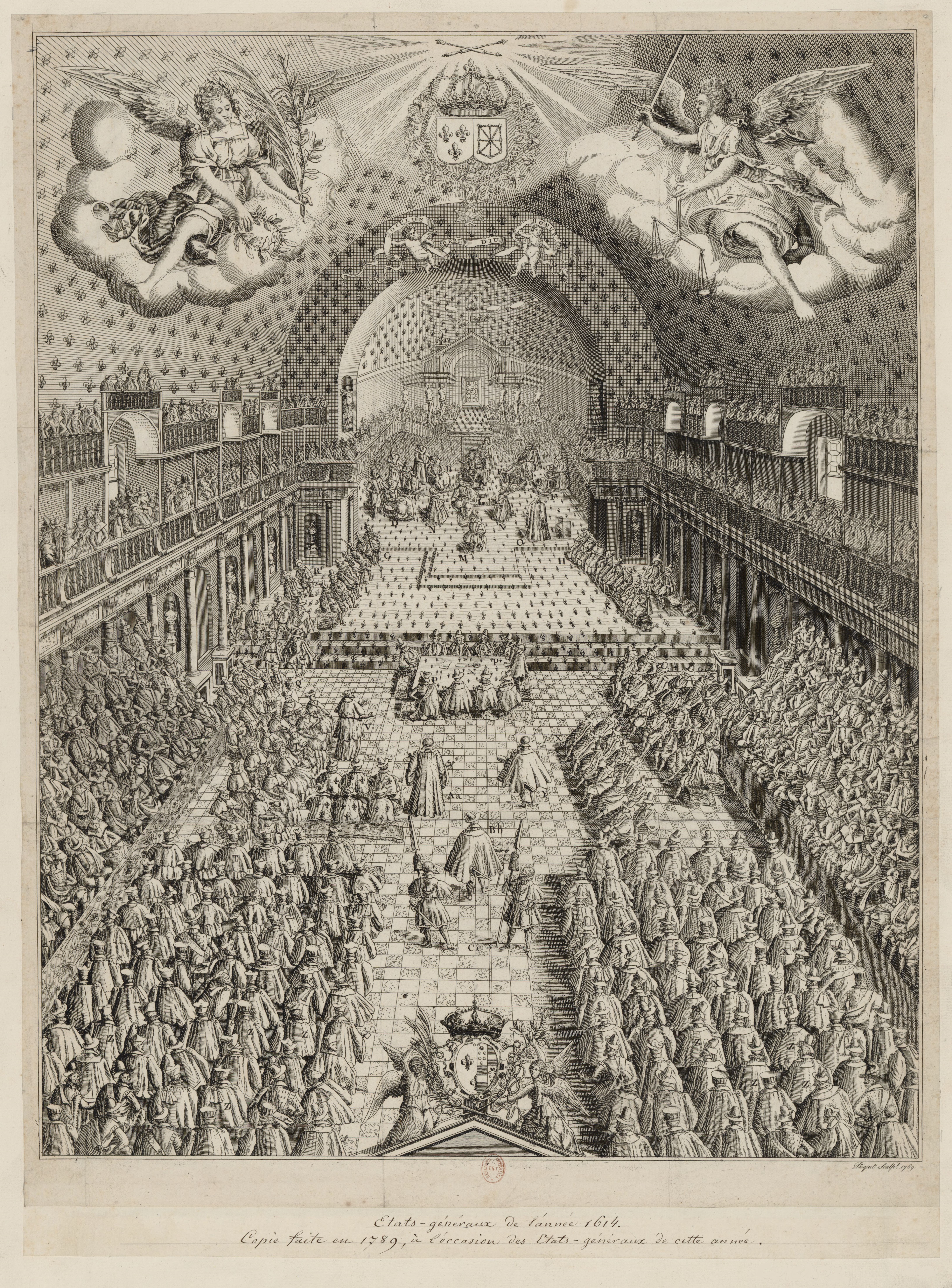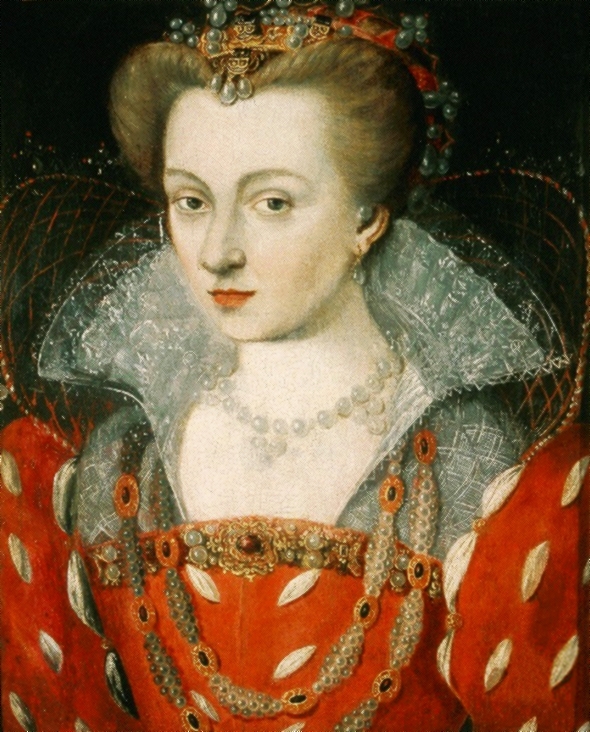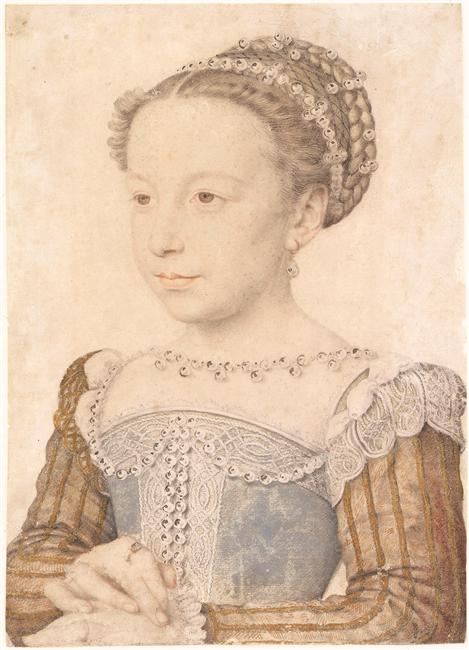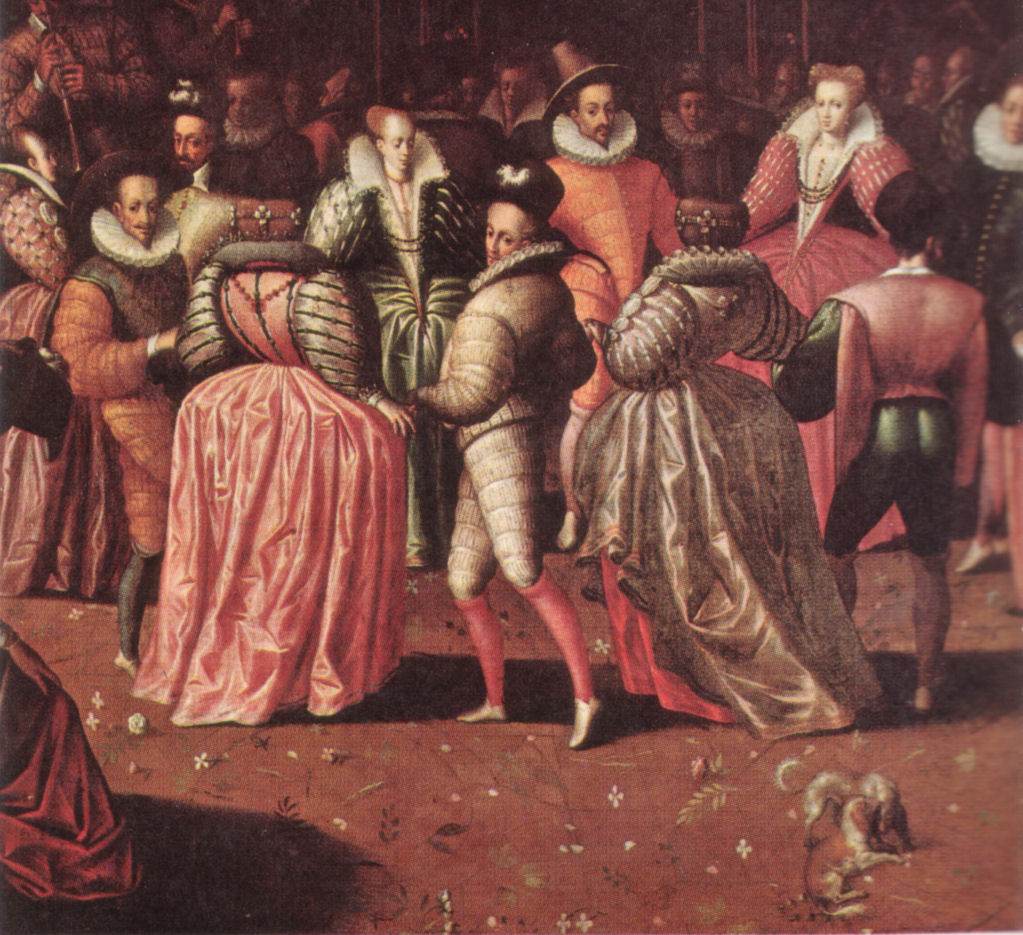|
Hôtel Du Petit-Bourbon
The Hôtel du Petit-Bourbon, a former Parisian town house of the royal family of Bourbon, was located on the right bank of the Seine on the rue d'Autriche, between the Louvre to the west and the Church of Saint-Germain l'Auxerrois to the east. It was constructed in the 14th century, not long after the Capetian Kings of France enlarged the fortress of the Louvre in order to use it as a royal residence. On two 1550 maps it is shown simply as the Hôtel de Bourbon, but by 1652, as the Petit-Bourbon on the map of (see below). The Bourbons took control of France in 1589, at which time they also acquired the Louvre. The Great Hall, the Grande Salle du Petit-Bourbon, was larger than any room in the Louvre, and served as the first theatre of the troupe of Molière upon their arrival in Paris in 1658; but by 1660 Molière and his actors were evicted, and the Petit-Bourbon was pulled down to make space for the construction of the Louvre Colonnade. History When in the fourteenth c ... [...More Info...] [...Related Items...] OR: [Wikipedia] [Google] [Baidu] |
Henri Sauval
Henri Sauval (5 March 1623 (baptised) – 21 March 1676) was a French historian. Biography Sauval was the son of an advocate in the Parlement, he was born in Paris, and baptized on 5 March 1623. He devoted most of his life to researches among the archives of his native city, and in 1656 even obtained a licence to print his ''Paris ancien et moderne''; but on his death (21 March 1676) the whole work was still in manuscript. A long time afterwards it appeared, thanks to his collaborator, Claude Bernard Rousseau, under the title of ''Histoire et recherches des antiquites de la ville de Paris'' (1724), but remodelled, with the addition of long and dull dissertations which were not by Sauval. The work was not without merits, and it was re-issued in 1733 and 1750. The original manuscript first belonged to Montmerqu, and then passed into the possession of Le Roux de Lincy, who prepared an annotated edition; unfortunately this material, together with the original MS., was lost in the ... [...More Info...] [...Related Items...] OR: [Wikipedia] [Google] [Baidu] |
Louise Of Lorraine
Louise of Lorraine (french: Louise de Lorraine-Vaudémont; 30 April 1553 – 29 January 1601) was Queen of France as the wife of King Henry III from their marriage on 15 February 1575 until his death on 2 August 1589. During the first three months of their marriage, she was also Queen of Poland and Grand Duchess of Lithuania. As a dowager queen, Louise held the title of Duchess of Berry. Personal life Early years Born in Nomeny in the Duchy of Bar, Louise was the third daughter and youngest child born to Nicholas of Lorraine, Duke of Mercœur, and Countess Margaret of Egmont (1517–1554). She was the only surviving child of her parents; her older siblings, two sisters and one brother, died in infancy. Louise's mother died shortly before her first birthday in 1554, and her father quickly remarried, in 1555, Princess Joanna of Savoy-Nemours (1532–1568), and gave Louise a solid classical education and introduced her to Nancy's court at the age of ten. Joanna of Savoy-Ne ... [...More Info...] [...Related Items...] OR: [Wikipedia] [Google] [Baidu] |
Anne De Joyeuse
Anne de Batarnay de Joyeuse, Baron d'Arques, Vicomte then Duke of Joyeuse (1560 – 20 October 1587) was a royal favourite and active participant in the French Wars of Religion. An intimate friend of Henry III of France, he was keeper of the king's chambers. With these serious responsibilities he also gained a number of privileges around the court, including the wearing of royal colors, such as royal blue, purple, and red. He also had the right to wear jewelry of high majesties of the court, such as a well-known red ruby and diamond ring given to him by the king: it had been confiscated from Princesse Marguerite de Valois as punishment for having accused Anne of trying to interfere with a meeting with the king, as requested of her by Catherine de' Medici. Anne was also a member of the circle of young courtiers known as '' Les Mignons''. Life Anne was born in 1560 in the château de Joyeuse. He was the eldest son of Guillaume, 8th Vicomte de Joyeuse, the owner of the rights to t ... [...More Info...] [...Related Items...] OR: [Wikipedia] [Google] [Baidu] |
Ballet Comique De La Reine
The ''Ballet Comique de la Reine'' (at the time spelled ''Balet comique de la Royne'') was an elaborate court spectacle performed on October 15, 1581, during the reign of Henry III of France, in the large hall of the Hôtel de Bourbon, adjacent to the Louvre Palace in Paris. It is often referred to as the first ''ballet de cour''. Creation The ''Ballet Comique de la Reine'' was created under the auspices of Henry III's mother, the dowager queen Catherine de' Medici, as part of the wedding celebrations for the Duke de Joyeuse and Queen Louise of Lorraine's sister, Marguerite de Vaudemont. The ballet was choreographed by Balthasar de Beaujoyeulx and was the first piece to combine poetry, music, design and dance according to the rules of Jean-Antoine de Baïf's Académie de Poésie et de Musique. The ballet was inspired by the enchantress, Circe, from Homer's ''Odyssey''. The pricey production lasted five and half hours and the Queen and King both participated in the performance. T ... [...More Info...] [...Related Items...] OR: [Wikipedia] [Google] [Baidu] |
Ballet De Cour
''Ballet de cour'' ("court ballet") is the name given to ballets performed in the 16th and 17th centuries at royal court, courts. The court ballet was a gathering of noblemen and women, as the cast and audience were largely supplied by the ruling class. The festivities, which were descendants of festivals, processions and mummeries dating back to the Middle Ages, looked more like a modern-day parade, than what people today would identify as a ballet performance. Where early court ballet differed from its predecessors, is that it was a secular, not religious happening. It was a carefully crafted mixture of art, socializing, and politics, with its primary objective being to exalt the State. Because these celebrations occurred long before the proscenium stage had been invented, and were instead executed in large halls with audience members stacked up on three sides of the performance, early court ballet’s choreography was constructed as a series of patterns and geometric shapes th ... [...More Info...] [...Related Items...] OR: [Wikipedia] [Google] [Baidu] |
Recitatives
Recitative (, also known by its Italian name "''recitativo''" ()) is a style of delivery (much used in operas, oratorios, and cantatas) in which a singer is allowed to adopt the rhythms and delivery of ordinary speech. Recitative does not repeat lines as formally composed songs do. It resembles sung ordinary speech more than a formal musical composition. Recitative can be distinguished on a continuum from more speech-like to more musically sung, with more sustained melodic lines. The mostly syllabic ''recitativo secco'' ("dry", accompanied only by continuo, typically cello and harpsichord) is at one end of the spectrum, through ''recitativo accompagnato'' (using orchestra), the more melismatic arioso, and finally the full-blown aria or ensemble, where the pulse is entirely governed by the music. Secco recitatives can be more improvisatory and free for the singer, since the accompaniment is so sparse; in contrast, when recitative is accompanied by orchestra, the singer must per ... [...More Info...] [...Related Items...] OR: [Wikipedia] [Google] [Baidu] |
Henri De Navarre
Henry IV (french: Henri IV; 13 December 1553 – 14 May 1610), also known by the epithets Good King Henry or Henry the Great, was King of Navarre (as Henry III) from 1572 and King of France from 1589 to 1610. He was the first monarch of France from the House of Bourbon, a cadet branch of the Capetian dynasty. He was assassinated in 1610 by François Ravaillac, a Catholic zealot, and was succeeded by his son Louis XIII. Henry was the son of Jeanne III of Navarre and Antoine de Bourbon, Duke of Vendôme. He was baptised as a Catholic but raised in the Protestant faith by his mother. He inherited the throne of Navarre in 1572 on his mother's death. As a Huguenot, Henry was involved in the French Wars of Religion, barely escaping assassination in the St. Bartholomew's Day massacre. He later led Protestant forces against the French royal army. Henry became king of France in 1589 upon the death of Henry III of France, Henry III, his brother-in-law and distant cousin. H ... [...More Info...] [...Related Items...] OR: [Wikipedia] [Google] [Baidu] |
Marguerite De Valois
Margaret of Valois (french: Marguerite, 14 May 1553 – 27 March 1615), popularly known as La Reine Margot, was a French princess of the Valois dynasty who became Queen of Navarre by marriage to Henry III of Navarre and then also Queen of France at her husband's 1589 accession to the latter throne as Henry IV. Margaret was the daughter of King Henry II of France and Catherine de' Medici and the sister of Kings Francis II, Charles IX and Henry III. Her union with the King of Navarre, which had been intended to contribute to the reconciliation of Roman Catholics and the Huguenots in France, was tarnished six days after the marriage ceremony by the St Bartholomew's Day massacre and the resumption of the French Wars of Religion. In the conflict between Henry III of France and the Malcontents, she took the side of Francis, Duke of Anjou, her younger brother, which caused Henry to have a deep aversion towards her. As Queen of Navarre, Margaret also played a pacifying role in the s ... [...More Info...] [...Related Items...] OR: [Wikipedia] [Google] [Baidu] |
Paradis D'amour
Catherine de' Medici's court festivals were a series of lavish and spectacular entertainments, sometimes called magnificences, laid on by Catherine de' Medici, the queen consort of France from 1547 to 1559 and queen mother from 1559 until her death in 1589. As queen consort of Henry II of France, Catherine showed interest in the arts and theatre, but it was not until she attained real political and financial power as queen mother that she began the series of tournaments and entertainments that dazzled her contemporaries and continue to fascinate scholars. Biographer Leonie Frieda suggests that "Catherine, more than anyone, inaugurated the fantastic entertainments for which later French monarchs also became renowned".Frieda, 225. For Catherine, these entertainments served a political purpose that made them worth their colossal expense. She presided over the royal government at a time when the French monarchy was in steep decline. With three of her sons on the throne in successi ... [...More Info...] [...Related Items...] OR: [Wikipedia] [Google] [Baidu] |
Catherine De Médicis
Catherine de' Medici ( it, Caterina de' Medici, ; french: Catherine de Médicis, ; 13 April 1519 – 5 January 1589) was an Florentine noblewoman born into the Medici family. She was Queen of France from 1547 to 1559 by marriage to King Henry II and the mother of French Kings Francis II, Charles IX, and Henry III. The years during which her sons reigned have been called "the age of Catherine de' Medici" since she had extensive, if at times varying, influence in the political life of France. Catherine was born in Florence to Lorenzo de' Medici, Duke of Urbino, and Madeleine de La Tour d'Auvergne. In 1533, at the age of 14, Catherine married Henry, the second son of King Francis I and Queen Claude of France. Catherine's marriage was arranged by her uncle Pope Clement VII. Henry excluded Catherine from participating in state affairs and instead showered favours on his chief mistress, Diane de Poitiers, who wielded much influence over him. Henry's death in 1559 thrust Cath ... [...More Info...] [...Related Items...] OR: [Wikipedia] [Google] [Baidu] |
Balet Comique De La Royne 1582 P4r, Illustration By Jacques Patin - Gallica 2010 (adjusted)
Ballet () is a type of performance dance that originated during the Italian Renaissance in the fifteenth century and later developed into a concert dance form in France and Russia. It has since become a widespread and highly technical form of dance with its own vocabulary. Ballet has been influential globally and has defined the foundational techniques which are used in many other dance genres and cultures. Various schools around the world have incorporated their own cultures. As a result, ballet has evolved in distinct ways. A ''ballet'' as a unified work comprises the choreography and music for a ballet production. Ballets are choreographed and performed by trained ballet dancers. Traditional classical ballets are usually performed with classical music accompaniment and use elaborate costumes and staging, whereas modern ballets are often performed in simple costumes and without elaborate sets or scenery. Etymology Ballet is a French word which had its origin in Italian ... [...More Info...] [...Related Items...] OR: [Wikipedia] [Google] [Baidu] |



.jpg)





